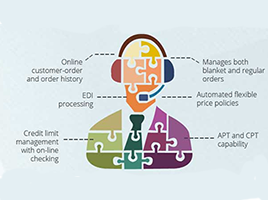2020 has been a tough year – but those businesses doing best are the ones who have been able to show flexibility and resilience. Good leadership has been vital to keeping staff motivated and projects on track.
Which brings us to this month’s topic. How to ensure a successful ERP implementation.
With Covid breathing down our necks, ERP projects can feel even more like a high-risk activity. But – there is so much to be gained from getting it right.
If you fear making an expensive mistake then I am here to reassure you. With good leadership and an enthusiastic team, that robust ERP technology can be yours – installed and starting to bring in results in a matter of weeks, IF you follow a few golden rules.
So, what are the key elements of a great ERP implementation? I’m going to hand over to our experts for this one. The in-house implementation team here at In Cloud Solutions is second to none. Their experience with implementing the mid-market SAP solution Business ByDesign is world-class – both as an out of the box solution as well as making the customisation adjustments that many customers request.
Here are 4 golden rules to follow to get your implementation right.

Getting your staff on board
New users are frequently confronted with a new system and are told to get on with it. In the experience of Paul McNally – who has 20 years behind him implementing ERP, this is not a good situation. Every user needs to understand what the aims are for the company as a whole and what the benefits are for them. It is unfair to call people stakeholders when they feel as though they have no stake in the change.
Don’t rush to customise
If your new system doesn’t replicate the processes you are used to, asking for customised changes may not be the answer -that’s the advice of In Cloud’s Senior Supply Chain Consultant Mengya Zhao. According to Mengya, the processes set up in SAP Business ByDesign are designed to be as efficient as possible – it is German technology after all! These processes are based on the experience of scores of previous customers involving thousands of successful transactions. Could you gain something from changing your processes to fit the system rather than the other way around? It’s worth thinking about – and doing so BEFORE you implement as it is much harder afterward!
Choose the right people for the project
You need to involve people with decision-making powers so that things get done. But you also need people with a deep understanding of day to day processes across the whole business. Good project teams are broad and deep according to Marine Ogier. It is important that everyone stays cheerful and nothing is missed! Give them the time to become involved in the design, training, and testing of your new system and you will reduce problems when you go live for real.
Don’t get tripped up by data
Our financial consultants all said the same thing – getting your data cleansed and in order early saves a lot of time and trouble. When the right data is in the right fields you can get it uploaded with ease! So, prepare the data in good time, in the right way, and then test it out.
You can hear these thoughts in audio form in our podcast called ERP Challenges, Learning from Common Customer Mistakes here.







